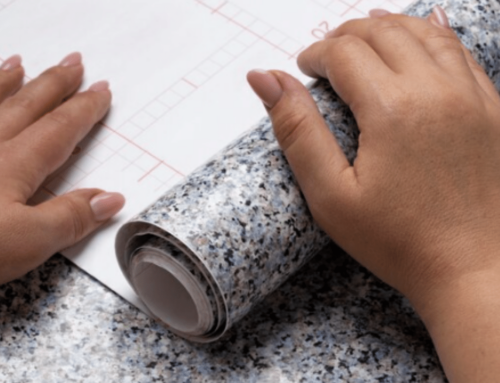When it comes to flooring, hardwood is often considered the gold standard. It’s beautiful, durable, and adds value to your home. However, one thing that can’t be ignored is the cost of installation.
Compared to other types of flooring, hardwood is typically the most expensive to install. But why is that? In this blog post, we’ll explore some of the reasons why hardwood flooring is so expensive to install.
High-Quality Materials
The fact that it needs the use of materials of a higher quality is one of the primary contributors to the high cost of installing hardwood flooring. Since solid wood is used in the construction of hardwood planks, this form of flooring is considerably more long-lasting than alternatives such as laminate or vinyl. Nonetheless, the increased cost reflects the increased durability of the product.
In addition, the availability and scarcity of various types of wood contribute to price differences among the various types of wood. For instance, the price of exotic woods such as Brazilian cherry or teak is significantly more than the price of domestic woods such as oak or maple.
Labor Costs
The amount of labor required to install hardwood flooring is another component that contributes to its high cost. The installation of hardwood floors is not a simple do-it-yourself endeavor; rather, it calls for specialized tools and a level of experience that the majority of homeowners lack.
To guarantee a good installation, professional installers need to take into account a variety of elements, including the quantity of moisture present and the preparation of the subfloor. The sum of all of these considerations is what ultimately determines the total cost of the installation.
Time-Consuming Installation Process
When compared to the installation of other types of flooring, installing hardwood floors is a time-consuming process. In order to get a flawless fit across the room, each plank will need to be meticulously measured and cut to size.
In addition, the process of installing the floor involves a number of processes, including laying down a vapor barrier, nailing down each individual plank, sanding the floor, and applying a finish to it.
In order for your floor to come out looking its absolute best, each of these stages takes time and requires precision. As a direct consequence of this, you should anticipate that the process of installing hardwood floors will take more time than installing other kinds of flooring.
Additional Costs
In addition to materials and labor costs, there are several additional costs associated with installing hardwood floors. These include:
- Removing old flooring: If you’re replacing existing flooring with hardwood planks, you’ll need to pay someone (or do it yourself) to remove the old flooring first.
- Furniture removal: If you have furniture in the room where you’re installing new floors, you’ll need to temporarily move it out while work is being done.
- Floor preparation: Depending on your subfloor type (concrete vs wood), additional prep work may be required before new floors can be installed.
- Finishing: Once your new floors are installed they will need finishing which includes staining or sealing them depending on your preference.
All these additional costs add up quickly making it an expensive investment for many homeowners.
The Process of Hardwood Floor Installation
Installing hardwood floors is a complex process that requires attention to detail and precision in order to achieve the desired result. Here’s an overview of the steps involved in installing hardwood floors:
Prepare the subfloor: The first step in installing hardwood floors is to prepare the subfloor. This involves cleaning the surface and ensuring it’s level and free from any debris or bumps that could affect the installation
Install a vapor barrier: A vapor barrier is a layer of material that prevents moisture from seeping up through the subfloor and into your new hardwood floors. This is especially important if you’re installing over concrete.
Lay down the underlayment: An underlayment is a thin layer of foam or felt that goes on top of the vapor barrier. It helps absorb sound, provide cushioning, and prevent any minor imperfections in the subfloor from affecting your new hardwood floors.
Measure and cut planks: Once your subfloor is prepped, it’s time to start laying down your hardwood planks. Each plank needs to be measured and cut to fit perfectly into your space.
Nail down planks: After cutting each plank, it’s time to nail them down one by one using a pneumatic flooring nailer or manual nail gun.
Sanding: Once all planks are installed, sanding begins to smooth out any rough spots or unevenness in the floor surface.
Staining/Finishing: After sanding, you can choose to either stain or finish your hardwood floors depending on your preference for color and shine level.
Final touches: Lastly, baseboards will be installed around perimeter walls where needed, adding finishing touches such as thresholds for doorways are added as required.
Overall, installing hardwood floors is a challenging but rewarding process that requires careful planning and expert execution.
Conclusion
In spite of the fact that there is no doubting the fact that hardwood floors are gorgeous and add value to any home, the cost of installing them is significantly more than the cost of installing other types of flooring that are currently available.
The combination of high-quality materials, which are necessary for durability reasons, and labor-intensive processes, which are necessary for appropriate installation, contribute to the total high cost of the product.
If you are considering installing new floors in your home but are unsure whether investing in hardwoods would make sense financially speaking given all these variables that we have discussed here today, then perhaps exploring other options such as laminate or vinyl could be worth exploring further!
If you are considering installing new floors in your home but are unsure whether or not an investment in hardwoods would make sense financially speaking, then go to us!
At Vinyl Flooring & Beyond, we can walk you through the entire process of installing hardwood floors and provide you with more insight into what it entails so that you can make an informed decision. Our team of experts has years of experience in this field and are eager to assist.
Contact us today for a free consultation!




